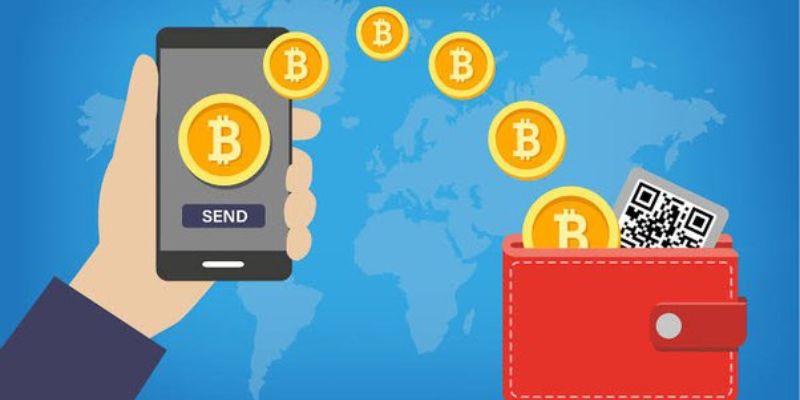Cryptocurrencies and digital payments are shaking up how we spend money. Imagine a world where sending cash is as simple as a text message. That’s where we’re heading, and it’s happening fast. I’ve seen blockchain tech grow from an obscure concept to the powerhouse behind our secure online transactions. Have you heard of smart contracts? They’re not just for tech whizzes anymore. They’re changing the game for everyone, ensuring deals are watertight and trustless. Join me on this adventure, and I’ll show you how to navigate the twists and turns of this digital payments revolution. Get ready to unlock the secrets of cryptocurrencies and step confidently into the future of money.
The Evolution and Impact of Blockchain Technology on Digital Payments
Milestones in Blockchain Evolution and Their Influence on Finance
In 2009, something big happened. Bitcoin came into the world. It was not just a new kind of money. It was a new way to handle all kinds of transactions, through blockchain technology. This made a huge splash in finance, changing how we think about money.
Let’s talk about why blockchain made waves. With blockchain, everyone can see the details of a transaction. It’s like an open book that everyone can read. But no one can erase anything from it. Bitcoin transactions use this tech. It’s safe and cuts out the middle person.
Soon after, more digital coins like Litecoin and Ripple’s payment network popped up. They aimed to be faster or better in other ways compared to Bitcoin. People now had choices in how to pay digitally, without using traditional banks.
The Role of Smart Contracts in Streamlining Online Transactions
Next came Ethereum, which brought us ‘smart contracts’. Smart contracts are like normal contracts, but they run themselves when certain things happen. They’re useful because they save time and make sure everyone does what they said they would.
For example, when you buy a song online, you pay, and the song downloads automatically. That’s a smart contract at work. They’re important in DeFi payment systems too. DeFi stands for “decentralized finance”. It’s finance without big banks in control.
Furthermore, Smart contracts in payments have made buying and selling much easier. Imagine selling your bike online. With a smart contract, as soon as someone pays the right amount, they become the new owner. You don’t need to wait or worry.
Blockchains like Ethereum can do more than just send coins. They can move other things of value, using tokens. This “tokenization of assets” includes anything from art to real estate, often as Non-fungible Tokens (NFTs). They’re unique and stored on a blockchain.
Also, we now have stablecoins. These are like dollars but on a blockchain. They don’t jump up or down in value as much as other digital coins. People use them a lot to buy and sell things online.
Remember hearing about ICOs? Stands for “Initial Coin Offering”. It’s like a kickoff fundraising, where new coins are sold to start up a project. Many people used ICOs to fund their blockchain adventures.
All these parts – crypto wallets, peer-to-peer digital currency, altcoin investment strategies, DeFi payment systems, and more – they make up the digital payment ecosystem. This ecosystem is growing fast. It’s taking us towards a future where digital money is just normal money.
There’s always something new in blockchains and digital payments. It’s an exciting ride and we’re all part of it. We’ve come far since that first Bitcoin, and there’s a lot more still to come. The world of money is changing, and we’re right at the edge of it.
The Dynamic World of Cryptocurrencies: Beyond Bitcoin
Ethereum and Litecoin: Advancing the Capabilities of Digital Money
Think of Bitcoin as the first step in digital money. It’s like the first phone. It did one thing great: calls. But soon, phones started doing more—photos, apps, and web browsing. That’s Ethereum and Litecoin. They’re like new, smarter phones in digital money.
Ethereum has a superpower—smart contracts. These are like deals that make themselves happen. Say you rent a bike online. With a smart contract, you pay, and the bike unlocks once the payment checks out. No need to meet the owner or sign papers. It’s all automatic. Ethereum lets developers build new apps too. This means more cool projects and services.
Litecoin is like Bitcoin’s little brother, but faster and cheaper for buying and sending. It’s like sending a text instead of a letter. It doesn’t do as much as Ethereum, but for quick payments, it shines.
The Rise of Altcoins and NFTs: Diversification and Asset Tokenization
Going beyond Ethereum and Litecoin, there are lots of other coins, called altcoins. Think of a big market with hundreds of small shops. Each one offers something special. Some altcoins help with faster payments, some keep your identity secret, and others let you lend and earn interest. Diving into altcoins can spread out your risk, like not putting all your toys in one box.
Then, there are NFTs. Imagine drawing a picture, then stamping it as the only one like it in the world. That’s an NFT. They make digital things one-of-a-kind. Like a rare Pokemon card but for digital art or music. It’s a new way for artists to make money and for fans to show support.
So that’s the world of digital money. It’s a playground with the classic swing of Bitcoin, but also slides, seesaws, and climbing frames—Ethereum, Litecoin, altcoins, and NFTs. Each has a role in the fun and adventure of this digital park.
Navigating the Regulatory and Security Landscape in Crypto
Understanding Digital Currency Regulations and Compliance Requirements
When it comes to money online, rules are key. They keep things fair and safe. This is super true for digital cash, like Bitcoin or Ethereum. Countries have different rules for using these. They check who uses them to keep out bad actions like money-laundering. Knowing these rules is a must for anyone wanting to buy or use digital money.
For example, ‘Know Your Customer’ (KYC) laws make sure exchanges know their users. They must check IDs. This helps stop crooks from using these platforms for shady deals.
And then there’s ‘Anti-Money Laundering’ (AML). These are other rules that exchanges follow. They track the cash to stop bad uses, like crime money. For us, it means a bit more work when we sign up for a crypto service, but it makes the whole system safer.
Enhancing Digital Ledger Security Through Advanced Cryptographic Measures
Hackers love to steal online money. So, keeping digital money safe is a big deal. The good news is, blockchain technology is tough to break. It uses puzzles called ‘cryptographic hash functions’. They protect data and are super hard to solve without the right key. Think of it like a super-secure lock on your money.
All transactions on a blockchain are also checked by many computers. This is called ‘consensus’. It’s like asking a crowd to agree that a deal is good before it goes through.
People keep digital money in things called ‘crypto wallets’. With them, you control your cash with ‘public and private keys’. The public key is like your house number, and the private key is like your house key. You need both to get to your digital cash. Keep your private key secret, or else others might take your money.
Blockchains secure not just money but also ‘smart contracts’. These are computer programs that follow rules to swap money or other digital things. With smart contracts, deals happen by themselves when the rules are met.
Remember, in the crypto world, staying safe isn’t just smart; it’s a must. And while the details can be a lot, taking the time to learn them means your digital dollars stay under lock and key.
The Future of Money: CBDCs and the Integration of Crypto in Mainstream Finance
Central Bank Digital Currencies: Redefining Government-Backed Money
Think of a dollar bill. Now think digital. That’s a CBDC. A Central Bank Digital Currency (CBDC) is like the money in your wallet, but it’s online. It’s made by a country’s central bank. They are like regular money but you can’t touch them.
CBDCs are safe because they’re made by governments. People and shops can use them, just like cash. They help you pay for things fast and without trouble. They’re new but getting popular because they make buying and selling easy.
Now, CBDCs work well with blockchain technology. Blockchain is a list of records, like a digital ledger. Each CBDC transaction goes on the list. This list is very secure and hard to change. It keeps money safe. Countries are looking at CBDCs to make their money systems better.
CBDCs are different from Bitcoin transactions. Bitcoin is made by people, not countries. Bitcoin’s list is public. CBDC’s list might not be. While Bitcoin is for everyone, governments control CBDCs.
Crypto’s Role in the Evolving Digital Payment Ecosystem and Cross-Border Transactions
Cryptos are digital coins like Bitcoin, Litecoin, and many others. They work across countries. Can you send money to someone far away? Yes, with crypto. Crypto does not care where you are. It moves money fast and with less cost than banks. This is good for people who are not near banks.
Crypto helps shops and people get money from all over the world. It’s good for business. You can buy stuff with crypto. Just need a crypto wallet, like an online pocket. This is how you keep and spend your crypto.
But not all cryptos are the same. Bitcoin is the first. It is like digital gold. People know it and trust it. Ethereum has advantages like smart contracts. They are like deals that happen by themselves when people agree. Ripple payment network helps banks send money fast.
In crypto, you can choose how to invest. Stablecoins keep their value well. These are like dollars but on the blockchain. Altcoin investment strategies let you pick different cryptos. Some go up and down in value a lot. This is crypto market volatility. But if you learn, you can plan for it.
Governments also make rules for using crypto. These rules keep your money safe. Digital currency regulations stop bad people from doing bad things with money. This is important. It means people can use crypto and still feel secure.
Remember, crypto is still new. It changes often and can be risky. Always think before you invest. It’s good to learn what each crypto does and how to use it. Then, using crypto can be easy and fun. And one day soon, your money might be mostly digital!
In this post, we dived into how blockchain has changed the way we handle money. We saw its growth and its big effect on finance. Smart contracts now make trading online smooth and quick.
We also explored the world of crypto, much more than just Bitcoin. Ethereum and Litecoin show us what digital money can do. Altcoins and NFTs have added more choices and ways to turn stuff into digital tokens.
Next, we checked out the rules and safety steps in crypto. We learned about following the law and keeping our digital money safe.
Looking ahead, we can see digital money getting even bigger. Central Bank Digital Currencies could soon shake up cash as we know it. And crypto will keep playing a big part in how we buy things, even across borders.
It’s a thrilling time for money. Stay tuned, and keep your eyes on the future. Let’s embrace this ride into a new world of money!
Q&A :
What is the difference between cryptocurrencies and digital payments?
Cryptocurrencies are types of digital or virtual currencies that use cryptography for security and operate on a decentralized network based on blockchain technology. They are not controlled by any central authority, which makes them resistant to government interference or manipulation. Digital payments, on the other hand, refer to any electronic transfer of funds to pay for goods or services, which may include traditional currency transactions through online banking, credit/debit cards, or payment systems like PayPal. Digital payments often involve centralized processing and oversight by financial institutions.
How do cryptocurrencies work to facilitate digital payments?
Cryptocurrencies facilitate digital payments by allowing direct peer-to-peer transactions without the need for a central authority or intermediary. Transactions are verified by a decentralized network of computers (nodes) and recorded on a public ledger known as a blockchain. Each transaction is securely encrypted, and the decentralized nature of the network makes it difficult for any fraudulent activities to occur.
Can cryptocurrencies be used for everyday transactions like digital payments?
Yes, cryptocurrencies can be used for everyday transactions, although their acceptance varies by merchant and region. While not all businesses accept cryptocurrencies directly due to their price volatility and regulatory concerns, there is a growing trend of merchants who do. Additionally, there are services that allow users to convert cryptocurrencies to local currency at the point of sale or provide cryptocurrency debit cards to facilitate transactions.
Are digital payments with cryptocurrencies secure?
Digital payments with cryptocurrencies are generally considered secure due to the use of cryptographic techniques and the decentralized blockchain technology that records the transactions. Each transaction is transparent and immutable, meaning it cannot be altered once confirmed. However, users must safeguard their digital wallets and private keys to prevent theft, as unauthorized access to these can lead to loss of funds.
What are the benefits of using cryptocurrencies for digital payments?
Using cryptocurrencies for digital payments offers several benefits: reduced transaction fees due to the absence of intermediaries, increased privacy since personal information isn’t necessary for transactions, accessibility for individuals without access to traditional banking, and quicker international transactions as they are not subject to traditional banking protocols. Additionally, the decentralized nature of cryptocurrencies means they are not subject to control by any single entity, potentially providing more freedom and flexibility for users.


